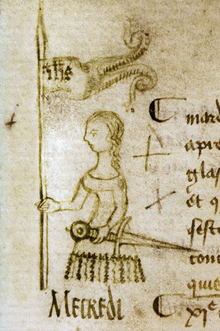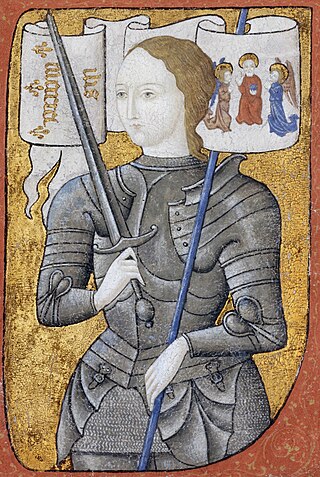
Joan of Arc is a patron saint of France, honored as a defender of the French nation for her role in the siege of Orléans and her insistence on the coronation of Charles VII of France during the Hundred Years' War. Claiming to be acting under divine guidance, she became a military leader who transcended gender roles and gained recognition as a savior of France.

The siege of Orléans marked a turning point of the Hundred Years' War between France and England. The siege took place at the pinnacle of English power during the later stages of the war, but was repulsed by French forces inspired by the arrival of Joan of Arc. The French would then regain the initiative in the conflict and began to recapture territories previously occupied by the English.
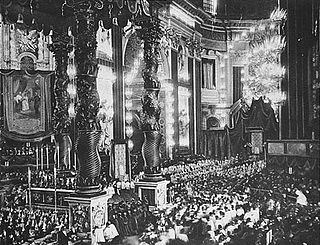
Joan of Arc (1412–1431) was formally canonized as a saint of the Roman Catholic Church on 16 May 1920 by Pope Benedict XV in his bull Divina disponente, which concluded the canonization process that the Sacred Congregation of Rites instigated after a petition of 1869 of the French Catholic hierarchy. Although pro-English clergy had Joan burnt at the stake for heresy in 1431, she was rehabilitated in 1456 after a posthumous retrial. Subsequently, she became a folk saint among French Catholics and soldiers inspired by her story of being commanded by God to fight for France against England. Many French regimes encouraged her cult, and the Third Republic was sympathetic to the canonization petition prior to the 1905 separation of church and state.
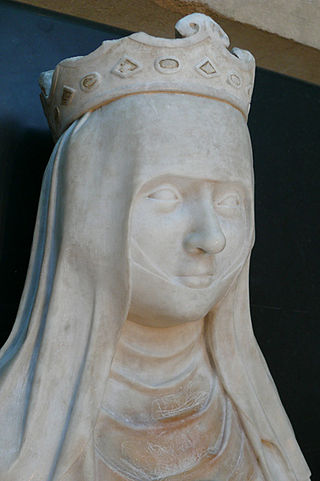
Joan of Évreux was Queen of France and Navarre as the third wife of King Charles IV of France.

Charles II, called the Bold was the Duke of Lorraine from 1390 to his death and Constable of France from 1418 to 1425.
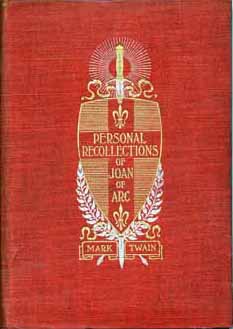
Personal Recollections of Joan of Arc, by the Sieur Louis de Conte is an 1896 novel by Mark Twain which recounts the life of Joan of Arc.
Joan of Arc By Herself and Her Witnesses (ISBN 0-8128-1260-3) is a translation of a 1962 book about Joan of Arc by Régine Pernoud. The translator, Edward Hyams, won the 1965 Scott Moncrieff Prize for his work on this book. Pernoud was the founder of the Centre Jeanne d'Arc at Orléans, France, and a noted historian.

Joan of Arc has inspired artistic and cultural works for nearly six centuries. The following lists cover various media to include items of historic interest, enduring works of high art, and recent representations in popular culture. The entries represent portrayals that a reader has a reasonable chance of encountering rather than a complete catalog. Lesser known works, particularly from early periods, are not included. In this article, many of the excluded items are derivative of better known representations. For instance, Friedrich Schiller's 1801 play The Maid of Orleans inspired at least 82 different dramatic works during the nineteenth century, and Verdi's and Tchaikovsky's operatic adaptations are still recorded and performed. Most of the others survive only in research libraries. As another example, in 1894, Émile Huet listed over 400 plays and musical works about Joan of Arc. Despite a great deal of scholarly interest in Joan of Arc, no complete list of artistic works about her exists, although a 1989 doctoral dissertation did identify all relevant films including ones for which no copy survives.
Fresh Verdicts on Joan of Arc is an anthology of scholarly essays on Joan of Arc. First published by Garland publishing in 1996 (ISBN 0-8153-3664-0), it is 336 pages long.
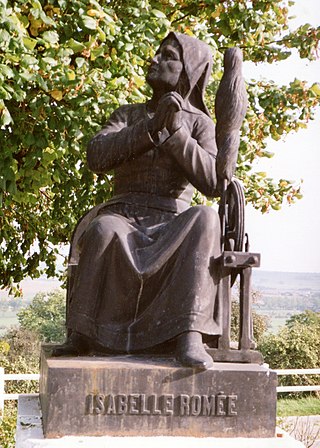
Isabelle Romée, also known as Isabelle de Vouthon and Isabelle d'Arc (1377–1458) and Ysabeau Romee, was the mother of Joan of Arc. She grew up in Vouthon-Bas and later married Jacques d'Arc. The couple moved to Domrémy, where they owned a farm consisting of about 50 acres (200,000 m2) of land. After their daughter's famous exploits in 1429, the family was granted noble status by Charles VII in December of that year. Isabelle moved to Orléans in 1440 after her husband's death and received a pension from the city. She petitioned Pope Nicholas V to reopen the court case that had convicted Joan of heresy, and then, in her seventies, addressed the opening session of the appellate trial at Notre Dame cathedral in Paris. The appeals court overturned Joan's conviction on 7 July 1456. Isabelle died two years later, probably at Sandillon near Orléans.
Pierronne, also known as Pierrone, Pierronne la Bretonne and Perrinaïc, was a Breton woman who said she saw visions of "God dressed in a long white robe with a red tunic underneath". Pierronne, who may have met Joan of Arc in 1429, tried to defend her reputation at Corbeil. For this, Pierronne was arrested by pro-English authorities in March 1430 and burned at the stake.

Jean Bréhal OP was the inquisitor-general of France who led the effort to rehabilitate Joan of Arc.

Due to inconsistent record keeping and different contemporary customs, the name of Joan of Arc at birth is not known for certain.

The Trial of Joan of Arc was a 15th century legal proceeding against Joan of Arc, a French military leader under Charles VII during the Hundred Years' War. During the siege of Compiègne in 1430, she was captured by Burgundian forces and subsequently sold to their English allies. She was prosecuted by a pro-English church court at Rouen, Normandy in 1431. The court found her guilty of heresy and she was burned at the stake. The verdict was later nullified at Joan's rehabilitation trial, which was overseen by the Inquisitor-General, Jean Bréhal, in 1456. Considered a French national heroine, she was declared a saint by the Roman Catholic Church in 1920. The trial is one of the most famous in history, becoming the subject of many books and films.
Pierre d'Arc (1408–1467) was a French soldier whose place in history is due to his service in the army made famous by his younger sister Joan of Arc.

Joan of Arc, a French historical figure executed by the English for heresy in 1431, is a national heroine of France and a Roman Catholic saint. Joan accompanied an army during the Hundred Years War, adopting the clothing of a soldier, which ultimately provided a pretense for her conviction and execution. Whether her crossdressing and lifestyle have implications for her sexuality or gender identity is debated.
Régine Pernoud was a French historian and archivist. Pernoud was one of the most prolific medievalists in 20th century France; more than any other single scholar of her time, her work advanced and expanded the study of Joan of Arc.
Jean de Metz was a French nobleman who is known primarily for his role in the exploits of Joan of Arc.

The witch-cult hypothesis is a discredited theory that the witch trials of the Early Modern period were an attempt to suppress a pagan religion that had survived the Christianization of Europe. According to its proponents, accused witches were actually followers of this alleged religion. They argue that the supposed 'witch cult' revolved around worshiping a Horned God of fertility and the underworld, whose Christian persecutors identified with the Devil, and whose followers held nocturnal rites at the witches' Sabbath.

The conviction of Joan of Arc in 1431 was posthumously investigated on appeal in the 1450s by Inquisitor-General Jean Bréhal at the request of Joan's surviving family – her mother Isabelle Romée and two of her brothers, Jean and Pierre. The appeal was authorized by Pope Callixtus III.
